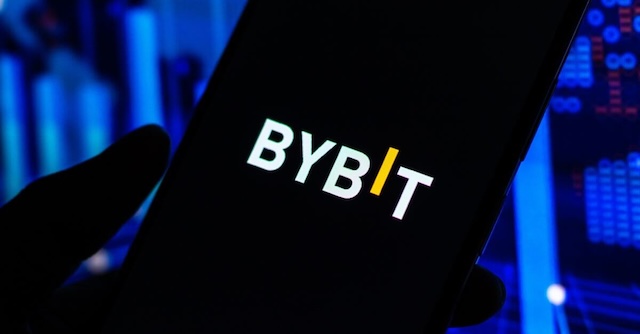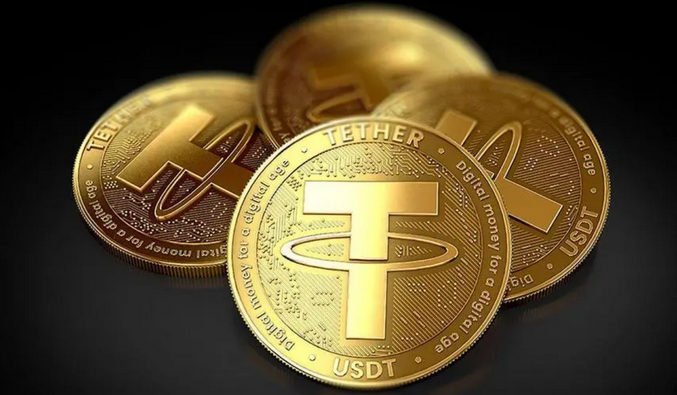 |
|
 |
|
 |
|
 |
|
 |
|
 |
|
 |
|
 |
|
 |
|
 |
|
 |
|
 |
|
 |
|
 |
|
 |
|
Cryptocurrency News Articles
Analysis of Binance User's Google Email Theft Leading to Fund Theft: Why Did 2FA Fail?
Feb 25, 2025 at 12:51 pm
Focusing on the incident of theft of funds caused by the stolen Google email of Binance user, analyzing the causes of 2FA failure, and also discussing the impact of the incident, platform response and similar cases, which are of great reference value.
I. Introduction to the Incident
A. The User's Experience
B. The Significance of the Incident
II. Understanding Two - Factor Authentication (2FA)
A. How 2FA Works in General
Something You Know: This is usually a password. It's a secret combination of characters that only the user should know.
Something You Have: This can be a mobile device. For example, when using 2FA, a user may receive a one - time password (OTP) on their mobile phone via SMS or through an authentication app like Google Authenticator or Authy.
B. 2FA in the Context of Binance
III. The Hacking Process: How the Google Email Was Compromised
A. Phishing Attacks
Email Phishing: The hacker may have sent a well - crafted phishing email to the user. This email could have been designed to look like an official communication from Google. For example, it might have claimed that there was a security issue with the user's account and required them to click on a link and enter their login credentials.
Spear Phishing: In some cases, the attacker may have done prior research on the user. They could have used personal information about the user to make the phishing email more convincing. For instance, if they knew the user had recently traveled, they could mention something related to the travel in the email to make it seem more legitimate.
B. Password Spraying
Automated Tools: Hackers use automated software to try a list of common passwords against a large number of email accounts. If the Binance user had a weak or common password for their Google account, it could have been compromised through this method.
Targeted Password Spraying: Sometimes, attackers target specific platforms or groups of users. If they knew that a particular group of Binance users had a tendency to use the same password across multiple accounts, they could have focused their password - spraying efforts on those users.
IV. The Link Between Google Email Hack and Binance Account Access
A. Password Reset
Forgot Password Option: The hacker could have gone to the Binance login page and clicked on the "Forgot Password" option. They then used the compromised Google email to receive the password - reset link. Once they had the link, they could set a new password for the Binance account.
Bypassing 2FA (Initial Stage): Since the password was reset, the hacker could now log in to the Binance account with the new password. At this point, they would be faced with the 2FA challenge.
B. Manipulating 2FA - Related Emails
Deleting 2FA Notifications: If the user had set up 2FA via email (although not the most common method), the hacker could have simply deleted the 2FA - related emails. This would prevent the user from receiving the OTPs and also keep them in the dark about the unauthorized access attempts.
Intercepting 2FA Setup Emails: In some cases, if the user had recently changed their 2FA settings or set up a new 2FA method, the hacker could have intercepted the emails containing the setup instructions or recovery codes. This would give them the ability to bypass the 2FA security.
V. Possible Reasons for 2FA Failure
A. Weaknesses in the 2FA Method
SMS - Based 2FA:
SIM Swapping: Hackers can use social engineering techniques to convince mobile carriers to transfer a user's phone number to a SIM card they control. Once they have the SIM card, they can receive the SMS - based OTPs.
Network Vulnerabilities: Mobile networks are not entirely secure. There have been cases where hackers have intercepted SMS messages through vulnerabilities in the mobile network infrastructure.
Authenticator App Vulnerabilities:
Malware Infection: If the user's mobile device was infected with malware, the malware could have been designed to steal the OTPs generated by the authenticator app. The malware could be programmed to intercept the data flow between the app and the device's screen.
Cloud - Based Backup Risks: Some users rely on cloud - based backups for their mobile devices. If the cloud account is compromised, the backup data, which may include the settings of the authenticator app, could be accessed by the hacker.
B. User - Related Factors
Sharing of Recovery Codes: Some users may share their 2FA recovery codes with others, either accidentally or due to lack of understanding of their importance. If these codes fall into the wrong hands, the hacker can use them to bypass the 2FA.
Reusing 2FA Codes: Although OTPs are designed to be used only once, some users may make the mistake of reusing them. If a hacker has access to a previously used OTP, they may be able to use it to gain access, especially if there are flaws in the system's code - validation process.
C. Binance - Side Vulnerabilities
Insufficient Account Lockout Policies: If Binance does not have strict account lockout policies, a hacker could keep trying different OTPs until they get the correct one. For example, if there is no limit on the number of failed 2FA attempts, it becomes easier for the hacker to brute - force their way into the account.
API Vulnerabilities: Binance has APIs that allow users to interact with their accounts programmatically. If these APIs have security vulnerabilities, a hacker could use them to bypass the normal 2FA process and access the user's account.
VI. Analysis of the Incident's Impact on the Cryptocurrency Ecosystem
A. Impact on Binance
Trust Erosion: Binance, as one of the largest cryptocurrency exchanges, may experience a loss of trust from its users. If users believe that their accounts are not secure, they may choose to move their funds to other exchanges or stop trading on Binance altogether.
Regulatory Scrutiny: Such security incidents can attract the attention of regulatory bodies. Binance may face increased regulatory pressure to improve its security measures and transparency.
B. Impact on the Cryptocurrency Market
Market Volatility: News of security breaches can lead to market volatility. Investors may become more cautious, and the value of cryptocurrencies may fluctuate as a result. This can also affect the overall growth and acceptance of the cryptocurrency market.
Inspiration for Innovation: On the other hand, this incident can also inspire the development of more advanced security technologies in the cryptocurrency space. Exchanges and wallet providers may invest more in research and development to create more secure authentication methods.
VII. Steps Taken by Binance and Google to Address Similar Incidents
A. Binance's Response
Enhanced Security Audits: Binance has increased the frequency and depth of its security audits. They are now conducting more thorough checks of their systems to identify and fix any vulnerabilities.
User Education: Binance has launched educational campaigns to teach its users about security best practices. These include how to create strong passwords, how to recognize phishing attempts, and the importance of keeping their 2FA methods secure.
B. Google's Response
Improved Phishing Detection: Google has enhanced its algorithms to detect phishing emails more effectively. They are using machine - learning techniques to analyze the content and behavior of incoming emails to identify potential phishing threats.
Account Recovery Enhancements: Google has made improvements to its account recovery process. They are now providing more options for users to regain control of their accounts in case of a hack, while also ensuring that the process is secure.
VIII. Case Studies of Similar Incidents in the Cryptocurrency Space
A. The Mt. Gox Collapse
Security Breaches: Mt. Gox, once one of the largest Bitcoin exchanges, suffered from multiple security breaches. Hackers were able to steal a large amount of Bitcoin. The lack of proper security measures, including weak authentication methods, contributed to its downfall.
Lessons Learned: This incident taught the cryptocurrency community the importance of robust security infrastructure, proper auditing, and continuous monitoring of exchange systems.
B. Other Exchange Hacks
Poloniex Hack: In 2017, Poloniex, a popular cryptocurrency exchange, was hacked. The attackers stole a significant amount of various cryptocurrencies. The hack was attributed to vulnerabilities in the exchange's security systems, including issues with user authentication.
Analysis of Similarities: These incidents share commonalities with the Binance - Google email hack case. They all highlight the importance of strong authentication, the need to protect user accounts from external threats, and the consequences of security failures in the cryptocurrency space.
Disclaimer:info@kdj.com
The information provided is not trading advice. kdj.com does not assume any responsibility for any investments made based on the information provided in this article. Cryptocurrencies are highly volatile and it is highly recommended that you invest with caution after thorough research!
If you believe that the content used on this website infringes your copyright, please contact us immediately (info@kdj.com) and we will delete it promptly.
-

- Crypto Analysts Say $2.5 Billion of SOL Will Be Circulated, What Impact Will This Have on the Market?
- Feb 25, 2025 at 03:18 pm
- Recently, SOLs have attracted attention. On March 1, 11.2 million SOLs will be unlocked. In the next three months, more than 15 million SOLs will be waiting for circulation. Institutions may sell, the market is panicked, and the crypto market is facing the test.
-

- 38.2 million USD SOL was withdrawn from Binance by Wintermute. Is Solana’s 2 billion USD token unlocking imminent?
- Feb 25, 2025 at 03:11 pm
- On February 24, crypto market maker Wintermute withdrew $38.2 million in SOL, which attracted attention. Solana welcomed large-scale token unlocking in a week. SOL prices were under pressure and the market was full of uncertainty.
-

- Analysis of Binance User's Google Email Theft Leading to Fund Theft: Why Did 2FA Fail?
- Feb 25, 2025 at 12:52 pm
- Focusing on the incident of theft of funds caused by the stolen Google email of Binance user, analyzing the causes of 2FA failure, and also discussing the impact of the incident, platform response and similar cases, which are of great reference value.
-

- With native multi-signature support, why does Justin Sun strongly recommend depositing large amounts of USDT on the Tron blockchain?
- Feb 24, 2025 at 05:52 pm
- Justin Sun strongly recommends depositing large USDT on Tron blockchain because its USDT is guaranteed, native multi-signature support, transparent transactions, convenient operation, and more secure and reliable asset storage.
-

- Bybit suffered a $1.5 billion hack, the largest theft in crypto history? Learn more in one article!
- Feb 24, 2025 at 05:50 pm
- Bybit was hacked and more than $1.5 billion in crypto assets were stolen, setting a record for the largest theft in crypto history. Hackers used malicious contracts and social engineering to manipulate transactions and transferred a large amount of ETH and stETH.
-

- Justin Sun recommends storing large amounts of USDT on the Tron blockchain. What are the advantages of cold multi-signature?
- Feb 24, 2025 at 05:48 pm
- Justin Sun recommends that large USDT be stored in Tron blockchains with cold multi-signature. Its advantages cover many aspects such as security, transparency, cost, compliance, community support and market recognition.
-

- Infini’s 50 million U.S. dollars was stolen. The founder is responsible for the loss. Can the withdrawal request be responded to in time?
- Feb 24, 2025 at 05:36 pm
- On February 24, Infini was stolen for $50 million, and the founder provided a guarantee. It involves many issues and risks such as reinvestment of funds, withdrawal response, and business upgrades.
-

- The founder of Infini said that he would bear 70% of the losses and the remaining funds would be invested back next week. Can users rest assured?
- Feb 24, 2025 at 05:28 pm
- Infini's $50 million was stolen, and the founder said he would bear 70% of the loss and invested back the remaining funds next week. Although he said that liquidity and other issues were fine, users were still worried about the security of funds and the future of the platform.
-

- From Mt. Gox to Bybit: An in-depth review of cryptocurrency exchange security incidents
- Feb 22, 2025 at 02:54 pm
- An in-depth review of cryptocurrency exchange security incidents from Mt. Gox to Bybit, covering the attack details, hacker methods, stolen assets and capital flows, as well as official responses and subsequent processing, showing the industry's security issues and response measures.























































